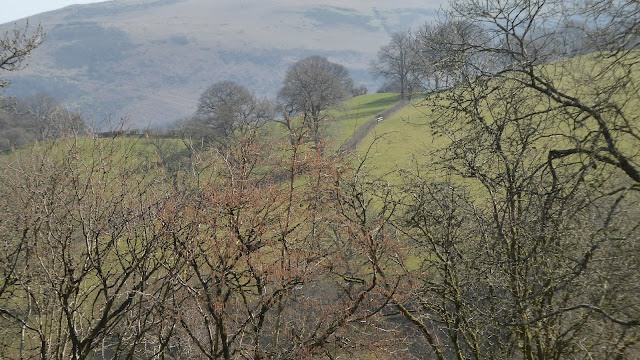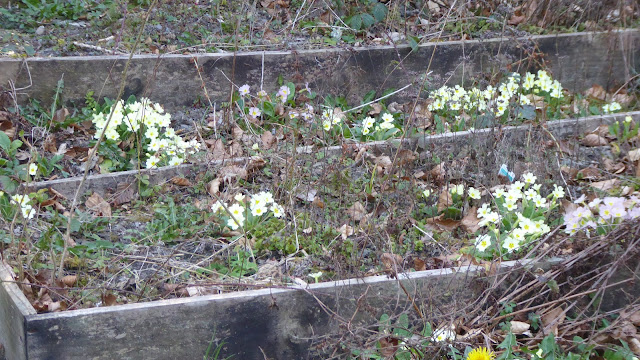Bring back the light mornings! I get so discombobulated when the clocks change. Normally if I wake early recently, it's light already. This morning, 6.10 a.m. and I've been up an hour and it's still pretty dark out there. When we were going to distant Fairs (e.g. Malvern from Carmarthen) we would be getting up at 3.30 a.m. and I hated driving there half the way in the pitch dark. Of course, in the winter, it was ALL the day and the sky was only just starting to lighten as we arrived at 7.30 a.m. Still, it was light till nearly 8 p.m. last night so I mustn't complain.
Last Friday we made the most of the sunshine and had a drive over towards Hay and visited the church at Llanigon. The village was absolutely beautiful - we'd not been there before, although there had been a house on the market there I liked the look of, but for the money, it was a bit too small for us and all our belongings. Imagine grey stone cottages all higgledy-piggledy and so pretty.
The church is dedicated to St Eigen, a semi-mythical saint, and the church site appears to be very early in origin. He may - or may not - have been a styled bishop and confessor whose mother may have been one of the daughters of Brychan (Kehingayr or Ceingair).
Just how early the site may be depends on who you believe. Theophious Jones suggested a 1st C St Eigon, daughter of Caradog ap Bran, who was converted to Christianity with her father in Rome by St Ilid (considered by some to be Joseph of Arimathea) and then they all came to Britain together and not only founded a monastery for twelve saints which became the "most eminent cor in the world" but brought Christianity to England. Baring-Gould and Fisher thought this was a load of old tosh!However, if you are at all intrigued by the idea, please read Barbara Erskine's book "The Warrior's Princess" and make up your own mind. I am re-reading my copy and can't put it down!
Ancient yew trees also suggest an early site.
Two amazing early fonts in the church porch.
There is apparently Eigion's Well not far from the church, which may be the same "Boiling Well" passed by a farmer's wife on her way to Hay-on-Wye where "on one occasion a 'spirit in white' jumped behind her on the horse as she passed this well, and rode with her until she reached home', after which it vanished." Rather her then me!! They wouldn't have had to go far for water for the font anyway.
Beautiful stained glass.
Apparently until the early 1800s the walls of the nave were "bedaubed with caricatures of death an time, a wretched imitation of the King's arms, and "many a holy text strewed around", instead of which a little white lime would be more ornamental."I will do another post later in the week, as this church also has strong links with Kilvert.



















































